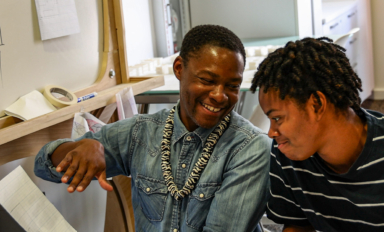5. Form Meets Fungus
Mushrooms are having a moment. As designers ruminate on the environmental cost of their material choices, they’re leaning into unexpected alternatives. And that has many of them turning to mushroom mycelium to conjure up everything from dresses to DIY furniture. Like something out of a sci-fi novel, mycelium could even eventually be used to grow living buildings.
But how does it stack up to traditional materials? Some varieties of mycelium are particularly noted for their strength, water- and fire-proofing benefits, and resistance to mold when dried. Plus, mycelium bricks have been shown to be stronger pound-for-pound than concrete—they’re also cheaper, easier to make, and completely biodegradable.
While some users may associate the fungus with mold, a number of designers aren’t about to let such antiquated notions to take root.
British furniture designer Sebastian Cox joined forces with researcher Ninela Ivanova to launch the Mycelium+Timber line that includes deeply stylish stools and lamps swathed in a suede-like texture created by the fungi.
But the shroomy material isn’t just for the living.
Dutch upstart Loop Biotech designed what it’s calling the world’s first living coffin made from mushroom mycelium. The so-called Loop Living Cocoon can be grown in seven days and allows human bodies to compost more efficiently, while enriching the surrounding soil where new trees and plants can grow and neutralizing toxic substances.







 Home
Home































































































































































































































































































































